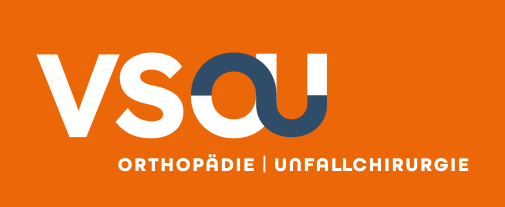Ihre Suche ergab 1 Treffer
Partielle und vollständige, kleine bis mittelgroße Rotatorenmanschettenrisse
Zusammenfassung:Risse und Teilrisse der Rotatorenmanschette sind mit Abstand die häufigste Ursache für Schulterschmerzen. In diesem Artikel werden verschiedene Rissformen, deren Ursache und Prognose vorgestellt. Die Symptome von Teil- und Totalrupturen können konservativ kurz- bis mittelfristig erfolgreich behandelt werden. Aufgrund der meist ungünstigen Prognose mit einem Fortschreiten der Sehnenschäden sowie der hiermit verbundenen Entstehung bzw. Progression einer Arthrose sollten Rekonstruktionsmöglichkeiten allerdings stets in die Therapieüberlegung einbezogen werden. Aufgrund sehr guter Ergebnisse auch beim älteren Patienten oder aber bei bereits bestehenden arthrotischen Veränderungen, sind auch in diesen Patientengruppen entsprechende Indikationsabwägungen nicht auszuschließen. Rotatorenmanschettenrekonstruktionen werden heutzutage zunehmend arthroskopisch durchgeführt. Je nach Ausgangssituation stellen die ein- und zweireihigen arthroskopischen Nahttechniken unter Verwendung geeigneter Anker- und Fadensysteme in jedem Alter und bei den allermeisten Ausgangssituationen ein zuverlässiges Verfahren dar. Nachdem ein Durchschneiden der Fäden durch das vorgeschädigte Sehnengewebe die wesentliche Ursache für ein Versagen einer Rekonstruktion ist, erachten wir die präzise Stichpositionierung unter arthroskopischer Sicht medial am bzw. im Rotatorenkabel als einen wichtigen Vorteil arthroskopischer Techniken. Weitere mögliche Probleme einer Manschettenrekonstruktion können Knochenstrukturstörungen, die eine ausreichend stabile Ankerfixation erschweren, darstellen. So finden sich bei Rissen oft zystische Veränderungen mit einem schwachen, wenig Halt bietenden Knochen unterhalb des Footprint. Ähnliche, zystische Osteolysen werden gelegentlich auch bei Revisionen nach Verwendung bestimmter biodegradierbarer Knochenanker gesehen. In solchen Fällen ist die arthroskopische, transossäre Naht, bei der das Fadenmaterial innerhalb der kleinlumigen Bohrkanäle seinen Halt findet, eine mögliche Alternative.In Anbetracht weiterhin relevanter Re-Ruptur-Raten ist die sog. biologische Augmentation der Sehnen-zu-Knochen-Heilung, v.a. mittels PRP, ein aktuell diskutiertes Thema. Auch wenn hierzu noch viele Unklarheiten bestehen, so ist es unzweifelhaft, dass die Erzielung einer hohen Vitalität und Heilungstendenz positive biologische Effekte auf das Rekonstruktionsergebnis haben kann.
Summary: Tears and partial tears of the rotator cuff are by far the most common cause of shoulder pain. This article presents various tear types, their causes and prognoses. The symptoms of partial and total tears can be successfully treated conservatively in the short to medium term. Due to the usually unfavorable prognosis with progressive tendon damage and the development or progression of osteoarthritic changes, reconstructive options should always be considered in the therapy decision. Regarding very good results in elderly patients as well as in cases with pre-existing osteoarthritic changes, these patient groups should not be excluded from these considerations. In recent years, rotator cuff repairs are increasingly being performed arthroscopically. Depending on the intra-operative situation, arthroscopic single- and double-row reconstruction techniques using suitable suture anchors provide reliable results at any age and in most situations. Since a cutting out of the sutures through the damaged tendon tissue is the main cause of failure of a cuff repair, we recommend the precise positioning of the suture stiches medial in or next to the rotator cable under arthroscopic visualization. Addressing this weak point of a cuff reconstruction might be the most important advantage of arthroscopic techniques. Other possible problems of reconstructive surgery are a reduced bone structure that compromises a stable anchor fixation. Remarkable cystic changes with a weak bone just below the footprint are often present in rotator cuff tears. A similar cystic osteolysis is also occasionally seen in revision cases when certain bioabsorbable anchors were used. In such cases, the arthroscopic, transosseous cuff repair, which holds the suture material within the small drill tunnels, is a plausible alternative. Regarding the fact that re-rupture rates are still relevant, possibilities for a biological augmentation of the tendon-to-bone healing, especially using PRP, is a topic that is currently being discussed. Even if there is still a lot of ambiguity, there is no doubt that achieving a high level of vitality as well as healing potential will have positive biological effects on our reconstruction results.
